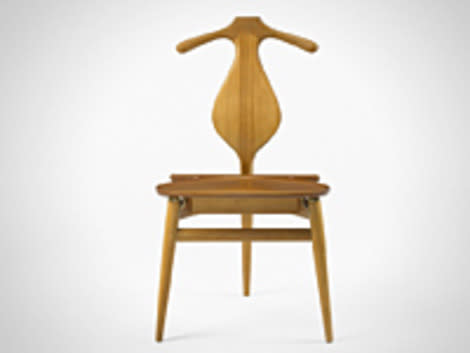Sitting on a Small Fortune
By Paul O' Donnell, CNBC.com
Sitting On a Small Fortune
While stock markets have mostly marched crabwise for the past decade, the trade in fine modern furniture has boomed.
"There were five stores like mine in the city 10 years ago," says James Elkind, owner of Lost City Arts, a purveyor of 20th century furniture in New York's Greenwich Village. "Now there are at least 50 in Manhattan alone."
These businesses are still bustling for a good reason, adds Elkind. "It's one of the few areas that didn't decline as precipitously as other forms of investment."
It might seem strange to consider furniture collecting - furniture made in recent memory, especially - as an alternative for active investors. Isn't the point to hold onto the stuff until it's an antique?
For most of the 20th century, that proposition was true. "Blue chip" furniture was equated with FFF, or fine French furniture - not just old, but ancien regime. You inherited the stuff, or else you announced that you arrived by stocking your home with gilded Louis XVI divans, dining chairs, and hallway tables, complemented by overstuffed sofas bathed in chintz. Think Mario Buatta. Doesn't ring a bell? Think Nancy Reagan's White House.
Then in the late 1990s, the Internet boom put serious money in the pockets of 20-something programmers and Baby Boomer entrepreneurs. Neither group was interested in filling their Silicon Valley mansions with museum pieces; these inventors of the future wanted a look that that leaned forward.
Midcentury Masters
They discovered the sleek, industrial-chic work of the Mid-century masters - the California modernist Charles Eames and his wife Ray; the Italian-born, Michigan-educated designer Harry Bertoia; and European scions of the Bauhaus movement.
The Mid-century designers shared Bauhaus's affection for mass-production techniques, fashioning world-class goods out of molded plastic and plywood. As a result, "there was lots of it," says Gregory Cerio, editor-at-large for "Modern Magazine', "and it was cheap and looked cool."
Even as the tech crash cooled other markets, the trade in modern furniture rolled on, helped by the interest of celebrities like Brad Pitt, for whom the Mid-century look recalled the salad days of Hollywood in the '30s and '40s.
Today, the market is considered mature - meaning that the hierarchy of important designers is well-established and their major works have been mostly identified. The new blue chip is work by French and Italian modernists. At this month's Design Miami, a prestigious fair held every winter, an armchair by the Frenchman Jean Prouve was going for $135,000. Larger pieces by even relatively unknown designers routinely break $100,000.
Prouve and other Europeans command these prices because they eventually abandoned large factory runs to craft their sheet metal and plywood by hand.
Among the American makers, too, handmade pieces are outpacing the mass produced, easily knocked-off early goods. "People have realized there are a million Eames chairs," says Cerio. "Now they are looking for custom designed stuff by the likes of Vladimir Kagan and Billy Baldwin."
Opportunities for Entry-Level Buyers
But some observers say the split has created opportunities for entry-level buyers: values even for the mass-produced pieces, they argue, will continue to improve as the market continues to tighten. "Early Eames is shockingly cheap," says Richard Wright, owner of an eponymously named auction house in Chicago.
The mania for French furniture has left perfectly beautiful work from other countries undervalued. Fine examples of Scandinavian designers like Hans Wegner and Finn Juhl, Wright says, sell for less than $10,000.

The key, as with any investment, is research. The same Internet that gave birth to the Mid-century boom has revolutionized collecting, opening the once shrouded world of auctions and dealers - and a history of sales - to anyone with a laptop.
"Pick the makers you like, and do your homework," says Elkind. "Go to a site like 1st Dibs or the auction houses' sites and use keyword search to see past prices." The more familiar a newbie is with what others have paid, the less likely, Elkind adds, "that you'll overpay by a multiple."
Another avenue for bargain hunters is to develop new terrain. Postmodern furniture - the wacky, designed-by-committee style that was a reaction to modernism's streamlined looks - has long been considered too "difficult" (read: ugly) to find a market; now it looks to be the next big thing.
A retrospective of postmodern design at London's Victoria & Albert Museum comes just as prices for the work of the late Ettore Sottsass, the dean of postmodernism, are registering in the six figures. Meanwhile, pieces by Sottsass's associates, such as Eco Parisi and Joe Colombo, go for less than two grand. Which postmodernist will be anointed number two to Sottsass? asked Wright. Guess correctly and you could get in on the ground floor.
More from CNBC:
Sitting Pretty: Investing in Antiques
How to Spot an Authentic Tiffany Lamp
Vintage Clothing: Fashionable and Profitable
